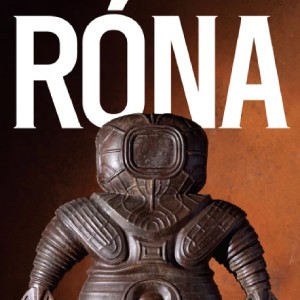Jaroslav Róna: Explorer
Trafo Gallery, Bubenské nábřeží 306/13, Praha 7 (Hall 14)
May 1, 2024 - June 16, 2024
 |
Jaroslav Róna: ExplorerTrafo Gallery, Bubenské nábřeží 306/13, Praha 7 (Hall 14)May 1, 2024 - June 16, 2024
The exhibition Explorer puts on display mostly current work being done by the painter and sculptor Jaroslav Róna, which develops the basic morphology, motifs and creative concepts of his unmistakeable aesthetic and style. The exhibition title emphasises the research, discovery and finally the unveiling of the most recent work, in which the mutual internal connections, along with the updating and re-evaluation of selected thematic units and spheres, are manifest. One is reminded of the quote by the French historian Jacques Le Goff: “The past is guarantor and the works of the past have the status of authority.” The essence of this quotation is ambiguous as regards the interpretation of Róna’s work. On the first level, it refers to well known symbols, subject matter and personalities in the history of art; and on the second level to the personal approach and continuity of the work of a specific artist, in this case Jaroslav Róna. His artist expression reflects the history and development of visual art, including authorities, painters and sculptures who have inspired him and whom he allows to influence him. At the same time, over the last three decades, he has acquired such a sovereign expression and position in the domain of art that he analogically enters into a dialogue with his own work, picking up themes opened up in the past, but perceiving them from a different perspective and within a different context that depends on the given experience and state of affairs at any given moment. In the paintings displayed, in many variations, Róna elaborates on war conflicts and their consequences, the depiction of the crucified Christ, the new concept of still life vanitas, and the different ideas, perspectives and values of the Western and non-European indigenous world. “It probably doesn’t make much sense to work with the subject of war and wartime conflict. Unless, that is, one is Otto Dix and was a machine-gunner on the front line in the trenches. There is already enough horror in the world without my paintings. On the other hand, as I said earlier, creating art pushes these themes upon itself. Moreover, I paint the oppressive atmosphere of abandoned cities and warnings of the apocalypse rather than revelling in the suffering of people. Finally, I must objectively state that the theme of war is among those of classical painting and has been handled by artists from Egypt and Babylon, through antiquity, the Middle Ages, the Renaissance, the Baroque and into the modern era. I love unequivocally the monumental painting The Battle of San Romano by Paolo Uccello, which consists of three panels now housed in the National Gallery in London, the Musée du Louvre in Paris and the Galleria degli Uffizi in Florence,” the artist says of the motifs appearing in his work. Róna’s expressiveness and naturalism convey a binding message and social critique, noting the pressing condition and problems of society and appealing to the gravity and consequences of implicit danger. Seemingly incompatible antitheses are reconciled and reinforced in his work. The element of threat and urgency of the thematic and compositional construction enters into contrast with the poetics of the colour scheme. In order to achieve this, Róna uses an iconic register that calls for a suspension or direct reaction. The oldest and most richly developed theme of Christian iconography, the Crucifixion of Christ, appears in his paintings, which he sets within an impersonal landscape, in the form of a cross with two crossbars or raised plinth. Death in the form of Christ on the cross is followed by a loose treatment of the still life vanitas, by which Róna draws attention not only to the finite nature of life, the awareness of death and extinction, but also to the role and importance of values in society. The return to the ideal of man is embodied in the figure of the knight in armour as the image of the model, holding a sword in one hand as a sign of defence and struggle against enemy invasion or negative and/or undesirable influences. In Róna’s canvases, loyalty and devotion are pledged by knights who follow a code of chivalric nobility. Róna recalls the loss of a common perspective and Judeo-Christian faith and tradition. Wars, cultural and religion differences, the fragmentation and conflict of interests contribute to the erosion of the Western cultural circle. The anchorage, heritage and knowledge of the lives of our ancestors was found in original values, traditions and customs. “It is true that one cannot remain forever in the world of vanitas without detriment, and so I am looking for forms of escape from the dark swamps and I have attempted such in the painting Pohádkové město (Fairytale City), by means of which I pay homage to another favourite of mine, Paul Klee. I hope he will be pleased. I managed to capture a similar fairytale atmosphere in Posvátný háj (Sacred Grove) and in the recent paintings Menhir and Bůh severních indiánů (God of the Northern Indians). I hope this will form part of a longer line of canvases that are somewhat lighter in mood. The basis of these paintings are the intuitive drawings that I create in black and white in a small notebook that I keep in my pocket at all times when travelling, in which I draw on a variety of external and internal impulses,” says the artist, referring to another source of inspiration for his works. In his recent paintings, Róna recalls the authentic material and spiritual
Curator: Barbora Půtová
|


